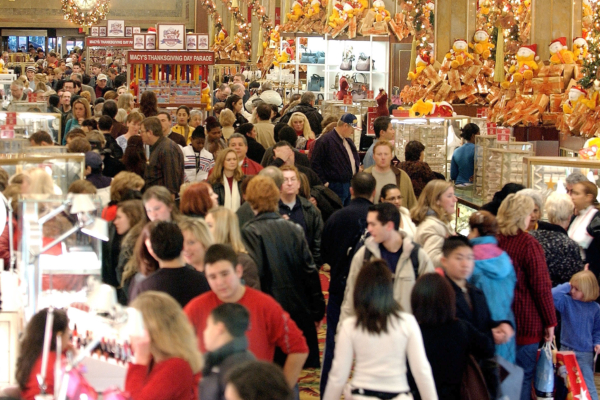In the past, the phenomenon of “Black Friday” shopping frenzy, which required queuing in the middle of the night and risking being trampled to grab a TV, seems to no longer exist. In 2025, consumers can easily click “Add to Cart” from the comfort of their homes and buy a 50-inch smart TV for $258, down from its original price of $2,000. No need to queue, no need to leave the Thanksgiving dinner table early – just wait for two days for the delivery to arrive.
According to Google Trends, on November 21st, “Is today Black Friday?” became a hot search term. This kind of confusion was almost unimaginable before 2005.
What has happened around Black Friday? The website lehighvalleylive recounted the origin and development of “Black Friday” for readers:
The term “Black Friday” can be traced back to 1869 when two Wall Street traders manipulated the gold market, leading to a financial collapse.
In 1951, New York media used the term to describe a large number of worker absences on the day after Thanksgiving; by the 1960s, the Philadelphia police used it to refer to the shopping and sports crowds that flooded the city after Thanksgiving.
It wasn’t until the 1980s that retailers successfully reshaped “Black Friday” as a symbol of turning from “loss (red) to profit (black),” laying the foundation for future shopping frenzies.
The “Cabbage Patch Kids Rush” in 1983 led to the rise of the Black Friday queuing culture; in 1989, a reporter worked for four hours at Younkers department store, describing it as so busy that there was no time to even go to the bathroom.
By the 1990s, stores started opening earlier, even extending into Thanksgiving Day itself. Kmart was the first to open for Thanksgiving shopping in 1991.
In 2008, the shocking Walmart stampede accident occurred, where an employee was trampled to death by 2,000 rushing consumers when the store opened; in 2011, a woman in California attacked 20 people with pepper spray to grab an Xbox game; and in 2014, a physical altercation broke out at Kohl’s.
Nowadays, the heat of Black Friday has greatly diminished, and the reasons are not complicated:
1. Shopping discounts are “ongoing throughout November”
Retailers like Walmart and Target started Black Friday promotions in early November, with some even offering “pre-Black Friday deals” in October. The long discount period made consumers forget the key timing.
2. Rise of e-commerce, disappearance of queuing culture
In 2019, online sales on Black Friday surpassed “Cyber Monday” for the first time; in 2020, the COVID-19 pandemic led companies to promote early. More and more retailers are not open on Thanksgiving, preventing customers from queuing the night before, and some brands like REI simply don’t open on Black Friday at all.
3. Permanent change in consumer shopping habits
The discounts on TVs, phones, and electronics are not as steep as before, with consumers paying more attention to terms like “home delivery,” warranty, and free shipping. Today’s Black Friday is no longer a “5-hour sprint” but a month-long discount marathon.
Although the crazy queues and chaotic scenes of the past Black Fridays are no longer seen, the consumer frenzy has not cooled down. The National Retail Federation (NRF) predicts that holiday shopping in the United States in 2025 will exceed $1 trillion for the first time.

